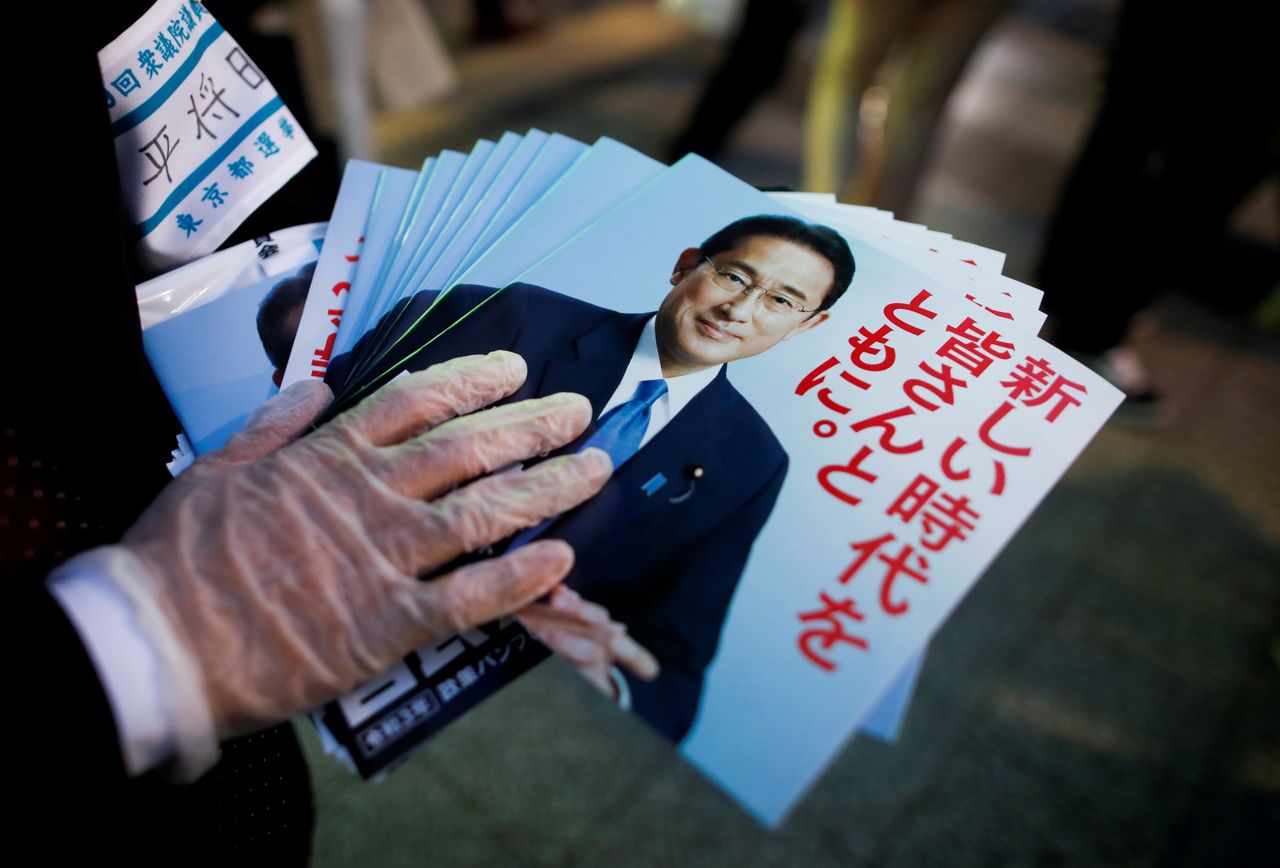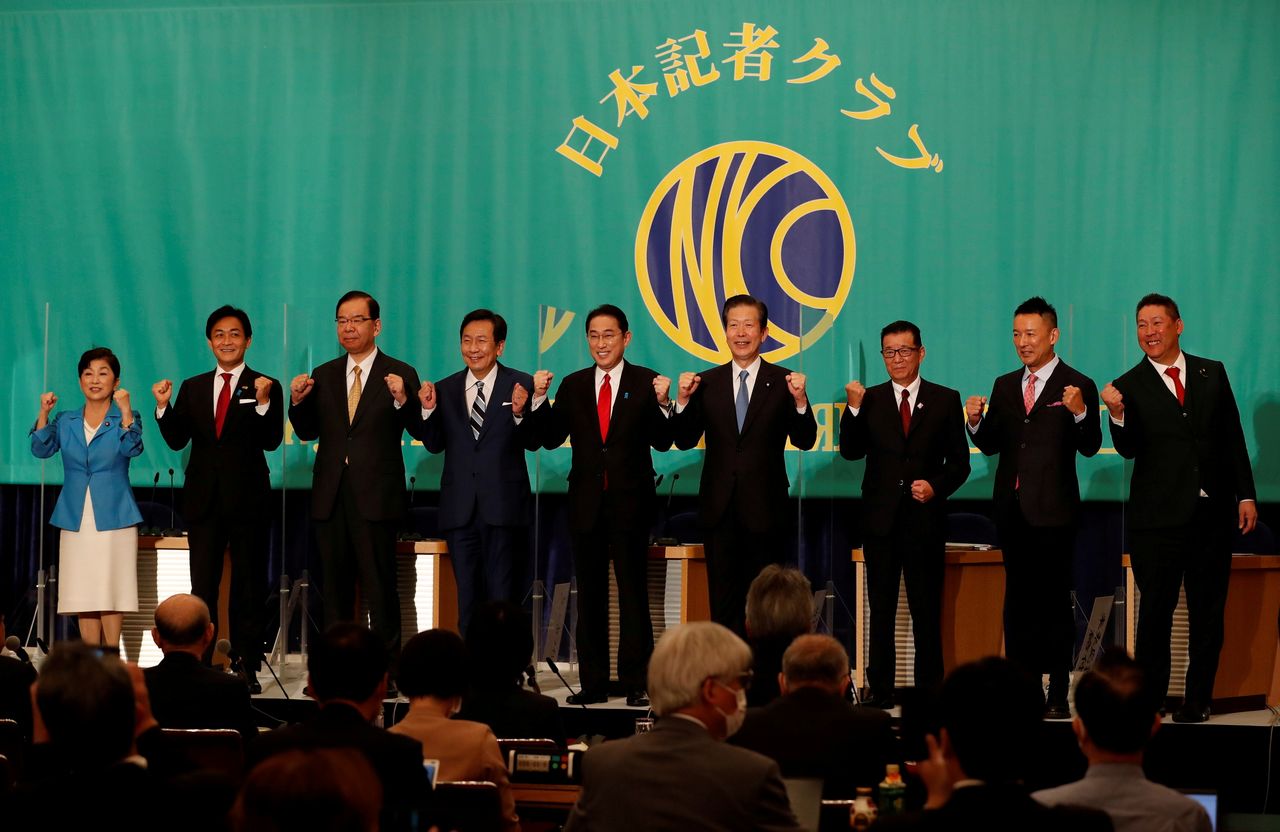Factbox-Five to watch: The big numbers for Japan's general election
Newsfrom Japan
- English
- 日本語
- 简体字
- 繁體字
- Français
- Español
- العربية
- Русский
By Kiyoshi Takenaka
TOKYO (Reuters) - Japan's new prime minister, Fumio Kishida, will face his first major test on Sunday when Japan holds a general election that could see his ruling Liberal Democratic Party (LDP) lose its majority in the powerful lower house.
Here are five numbers to watch as Kishida's LDP and junior partner Komeito seek a fresh voter mandate.
1/ 233 SEATS FOR A MAJORITY
Kishida has said he wants to maintain a majority - or 233 seats of the 465-member lower chamber - for the ruling coalition, a low-ball target given that the LDP alone held 276 seats before the election was called this month.
The coalition is expected to remain in power, but the focus is on whether the LDP can retain a majority by itself.
It is expected to lose some seats due to disapproval over its handling of the pandemic, and lacklustre support for Kishida. Some polls show the LDP could lose its majority, a result that would raise questions about Kishida's ability to hang in for the long term and weaken him ahead of next year's upper house vote.
2/ 261 FOR STABILITY
Some media polls suggest the ruling coalition could reach the so-called "absolute stable majority" of 261 seats - enough for it to take all the parliamentary committee chairs and maintain majority at each committee, making it easy to push through bills.
3/ TREBLE FOR JAPAN INNOVATION PARTY
The reform-minded Japan Innovation Party (JIP) could treble the number of its lawmakers as its support base expands from the western major city of Osaka and surrounding areas to the rest of the country, several surveys have shown.
The JIP, which held 11 lower house seats before the election was called, could win up to 36 seats, an outcome that could make it the third-biggest party at the chamber, the Asahi daily said, bolstering its influence in national politics.
Although JIP is in opposition, like Kishida's LDP it is for revising the U.S.-drafted, post-war constitution and letting the defence budget break away from a narrow range around 1% of GDP to increase Japan's security posture.
4/ 10% FEMALE LAWMAKERS
Women accounted for 10% of lower house lawmakers before the chamber was dissolved this month, far behind France's 40% and 27% in the United States.
Japan comes 120th in the World Economic Forum's global gender gap report, due mainly to limited presence of women in political leadership.
Thirty-three women are on the LDP ticket, accounting for 10% of its total candidates in the election, while the opposition Constitutional Democratic Party of Japan has fielded 44 female candidates, or 18% of its overall candidates.
5/ 54% - VOTER TURNOUT LAST TIME
Voter turnout came in at 54% in the 2017 lower house election, the second-lowest in post-war Japan, meaning nearly half of the electorate failed to exercise their right to vote.
Youth turnout was particularly low, with only three out of every 10 people in the 20-24 age bracket casting votes. As a result, lawmakers tend to pay more heed to the needs of the elderly, who are far more likely to vote in ageing Japan.
(Reporting by Kiyoshi Takenaka; Editing by Lincoln Feast, David Dolan and Christina Fincher)

FILE PHOTO: An election campaign staff member holds leaflets of Japan's ruling Liberal Democratic Party with cover photos of Japan's Prime Minister and the party's president Fumio Kishida, as he distributes these to voters during an election campaign on the first day of campaigning for the upcoming lower house election, amid the coronavirus disease (COVID-19) pandemic, in Tokyo, Japan October 19, 2021. REUTERS/Issei Kato

FILE PHOTO: The Social Democratic Party head Mizuho Fukushima, the Democratic Party for the People leader Yuichiro Tamaki, the Japanese Communist Party Chairman Kazuo Shii, the Constitutional Democratic Party of Japan leader Yukio Edano, Japan?fs Prime Minister and ruling Liberal Democratic Party President Fumio Kishida, Komeito party leader Natsuo Yamaguchi, The Japan Restoration Party, also known as the Japan Restoration Association, leader Ichiro Matsui, Reiwa Shinsengumi party leader Taro Yamamoto, and leader of the party fighting against NHK in the trial for violating Article 72 of the Attorney Act Takashi Tachibana pose for a photograph at the start of debate session ahead of October 31, 2021 lower house election, at the Japan National Press Club in Tokyo, Japan October 18 , 2021. REUTERS/Issei Kato/Pool
(c) Copyright Thomson Reuters 2021. Click For Restrictions -
https://agency.reuters.com/en/copyright.html